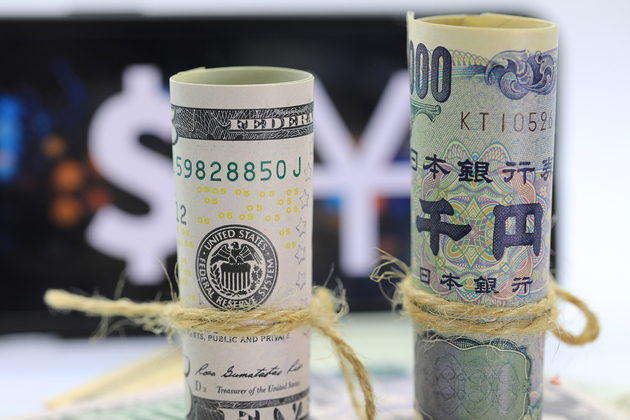
Last year, the controversial tax cuts in the UK pushed the country’s debt prices to the highest level since the financial crisis. Subsequently, S&P and Fitch downgraded the UK’s outlook to negative. But Japan’s debt problem is even more serious than the UK’s.
According to estimates by IMF, Japan’s debt reached 1,270.499 trillion yen (about 9 trillion US dollars) at the end of 2022, equivalent to about 260% of the country’s GDP, brushing record for the seventh consecutive year. This makes people wonder whether Japan will follow US' suit.
Krisjanis Krustins, head of sovereign ratings for Asia-Pacific at Fitch, said bluntly in an email to NBD that Japan’s high debt is the main weakness of Japan’s sovereign credit rating.
Shinichiro Kobayashi, chief economist at Mitsubishi UFJ Research and Consulting, said frankly, “If Japan’s sovereign credit rating may be downgraded, then the upward pressure on government bonds may push the yield of (Japan’s 10-year government bonds) above 1%.” According to Japan’s Ministry of Finance, if the yield of 10-year government bonds rises by 1% compared with the benchmark yield, Japan’s debt repayment expenditure is expected to increase by 3.6 trillion yen by fiscal year 2026.
Krisjanis Krustins also made a similar prediction to NBD in his email. “We expect that by the end of fiscal year 2022, Japan’s general government debt /GDP will reach nearly 247%, which will be the highest among investment-grade sovereign countries.”
By comparison, Greece and Italy, which have been mired in debt crises, have debt ratios of 166% and 140.3%, respectively, while the US has a debt ratio of 122.2%. Germany has the lowest debt ratio of only 67.2% of GDP.
However, the Japanese government is still relatively optimistic - under the optimistic forecast of Japan’s potential economic growth rate rising, the Japanese government expects to achieve a balanced budget by fiscal year 2026. At present, Japan’s borrowing costs are soaring. Last Friday (August 4), the Bank of Japan decided to allow Japan’s government bond yields to exceed its previous limit of 0.5% to 1%, which has triggered a surge in yields - in Monday’s Asian trading session, Japan’s government bond yields broke above 0.6% for the first time in nine years.
It should be noted that Japan is still continuing to spend. So far, Japan’s fiscal policy has not caused panic like last year’s Truss government tax cut plan in the UK.
The Nikkei News reported that various factors are suppressing the explosion of Japan’s debt “time bomb”: Japanese companies hold a lot of cash and have not borrowed heavily; Japan’s government bonds have a relatively long average maturity and are mostly held domestically; Japan has a healthy current account surplus. The report said that perhaps the biggest factor is what Tohru Sasaki, head of Japan macro research at JPMorgan Chase, called “a kind of addiction” (market) to the Bank of Japan’s ultra-loose monetary policy.
Under the leadership of former and current Bank of Japan governors Haruhiko Kuroda and Kazuo Ueda, the Bank of Japan has kept interest rates near zero or even negative. Under a large-scale asset purchase program, the Bank of Japan currently holds about half of Japan’s sovereign debt.
“The Bank of Japan cannot get rid of monetizing government debt. If we encounter difficulties in the future, the Bank of Japan may buy government bonds. I don’t say this optimistically, but pessimistically.” Tohru Sasaki said.
But it is undeniable that risks are rapidly accumulating.
The Nikkei News reported that it is expected that 22.1% of Japan’s fiscal year 2022 budget will be used to pay interest and repay debt. Considering this, as well as Japan’s increasing debt burden, Japanese Finance Minister Toshimitsu Suzuki publicly warned in March this year that “the severity of Japan’s public finances has reached an unprecedented level.” The Bank of Japan also recently lowered its economic outlook rating and warned that Japan’s fiscal situation is becoming increasingly unstable.
“Japan’s high debt is the main weakness of Japan’s sovereign credit rating.” Krisjanis Krustins told Daily Economic News reporters.
Bloomberg reported that for the past 30 years, Japan’s credit rating has been on a downward trend. S&P downgraded Japan’s long-term foreign currency issuer default rating to A+ in 2015. Among the Group of Seven (G7), Japan’s current credit rating ranks second to last, only higher than Italy’s BBB rating, which has been mired in a debt crisis for a long time. That is to say, with Japan’s credit rating, if the market is purely left to make choices, Japanese bonds are not that competitive. Japan’s sovereign credit rating is the second lowest among G7 countries (Image source: Bloomberg)
At present, some market participants are worried that with Japan’s eventual exit from quantitative easing policy, the rise in interest rates that comes with it may also question the government’s credit, thereby complicating the Japanese bond financing operation and bringing short-term risks.
Krisjanis Krustins pointed out to NBD that Japan’s low borrowing costs support its sovereign rating. “In the absence of a sustained rise in inflation, interest rate increases may push up debt, but due to the long maturity of most of the debt, high debt will occur gradually. More directly, interest rate increases may damage the Bank of Japan’s financial situation.”
Kim Eng Tan, senior director at S&P Global Ratings, warned that if the Bank of Japan suddenly raises interest rates or tightens monetary policy, it will trigger Japan’s debt crisis. In addition, Japan’s aging population and population decline leading to low growth are also major risk. If productivity is not significantly increased, the decline in the working-age population will make it difficult for Japan to maintain or promote economic growth. Christian de Guzman also warned that “the biggest social risk factor for Japan is population factors.”


 川公网安备 51019002001991号
川公网安备 51019002001991号





